
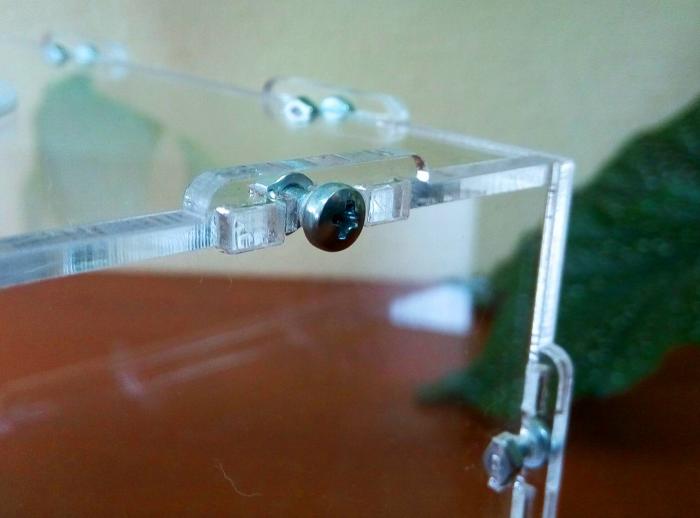

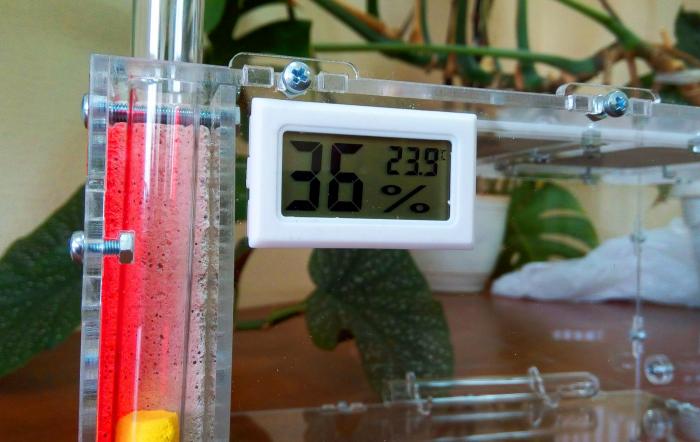
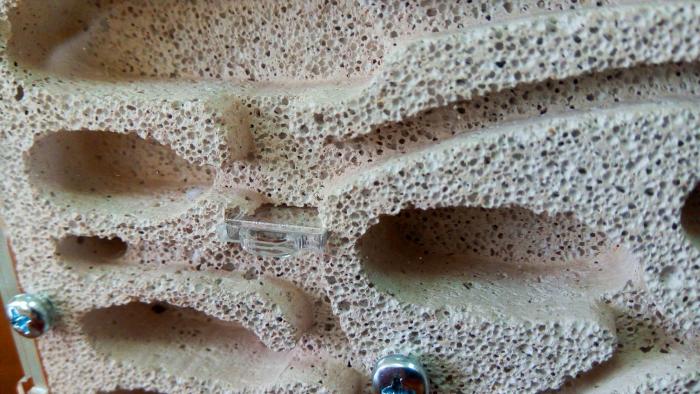
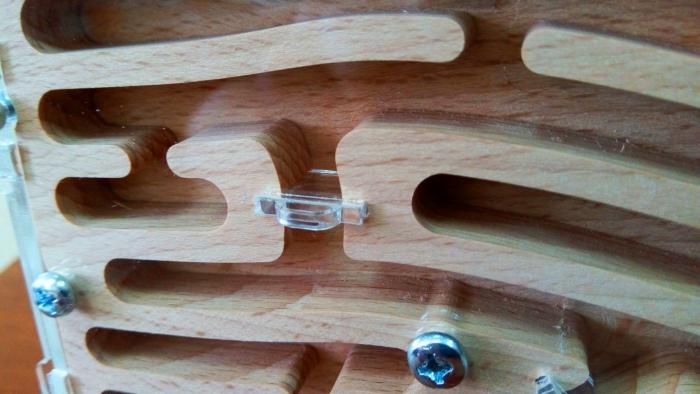


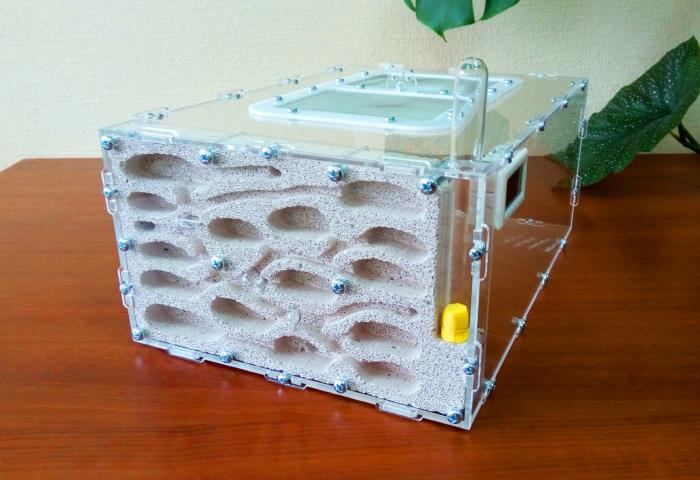
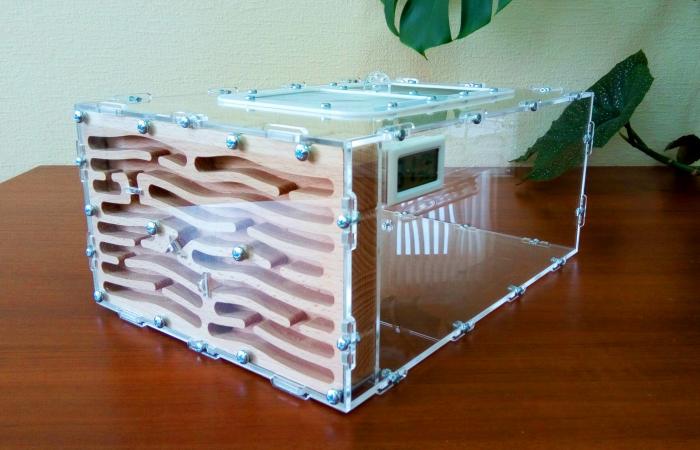

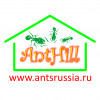











How does hydration work on the wooden one?
Wooden nests aren't hydrated, ants drink water only on outworld.
Beautiful design. Both looks good but I'm concern with the hydration system with the wood design. This seems silly but have you tested this with the Camponotus?
Wooden nest isn't directly moistened. Nest is severely deformed from moisture, so there is a large drinking bowl in the arena and the ants themselves will moisten the nest.
Hit "Like This" if it helped.
Beautiful design. Both looks good but I'm concern with the hydration system with the wood design. This seems silly but have you tested this with the Camponotus?
Wooden nest isn't directly moistened. Nest is severely deformed from moisture, so there is a large drinking bowl in the arena and the ants themselves will moisten the nest.
All my colonies are dead.
Except:
Pogonomyrmex barbatus
Pheidole obscurithorax
Pheidole morens
Isn't there a rule where you can't advertise, if I'm wrong can somebody correct me?
This was posted to the Marketplace, which unless I'm mistaken exists for the sole purpose of advertising.
Isn't there a rule where you can't advertise, if I'm wrong can somebody correct me?
Wow, absolutely gorgeous formicaria.
Beautiful design. Both looks good but I'm concern with the hydration system with the wood design. This seems silly but have you tested this with the Camponotus?
Wooden nest isn't directly moistened. Nest is severely deformed from moisture, so there is a large drinking bowl in the arena and the ants themselves will moisten the nest.
Thanks!Isn't there a rule where you can't advertise, if I'm wrong can somebody correct me?
You can read the forum rules here: http://www.formicult...12-forum-rules/
Perhaps you have mistaken this forum for some of the vendor-run forums on Facebook and elsewhere, which often have more rules than the US Constitution, and where everything is banned.
All my colonies are dead.
Except:
Pogonomyrmex barbatus
Pheidole obscurithorax
Pheidole morens
With Crazylegs being the Duke of Australia... Pretty sure antsrussia took the crown to become Czar of Russia with these get ups.

"I'm the search bar! Type questions into me and I'll search within the forums for an answer!"
Isn't there a rule where you can't advertise, if I'm wrong can somebody correct me?
You can read the forum rules here: http://www.formicult...12-forum-rules/
Perhaps you have mistaken this forum for some of the vendor-run forums on Facebook and elsewhere, which often have more rules than the US Constitution, and where everything is banned.
I've kept all of my Camponotus species in dry nests so far without any problems. Just try it yourself: Offer a Camponotus colony which lives in a test tube (with water in the tank) a new dry nest and heat it up a little bit. If they move in they won't require a humid nest, if they don't they probably need one. In my experience ants which live in wood in nature don't need a humid nest.
Nest moisture is a welcome safeguard, but sometimes the average humidity of your location and access to drinking water are plenty for captive colonies. It took me some time to realize that the hydration system for my first DIY nest, housing Lasius umbratus, was a complete failure, but the colony ended up thriving with only drinking water. Summer humidity in Maine is usually above 50% -- most of this week will be around 75%.
If you've enjoyed using my expertise and identifications, please do not create undue ecological risk by releasing your ants. The environment which we keep our pet insects is alien and oftentimes unsanitary, so ensure that wild populations stay safe by giving your ants the best care you can manage for the rest of their lives, as we must do with any other pet.
Exotic ants are for those who think that vibrant diversity is something you need to pay money to see. It is illegal to transport live ants across state lines.
----
Black lives still matter.
I agree with Batspiderfish. I think sometimes people forget about the ambient humidity. My Tapinoma sessile seem quite content with just a supply of drinking water and not other form of hydration.
Nest moisture is a welcome safeguard, but sometimes the average humidity of your location and access to drinking water are plenty for captive colonies. It took me some time to realize that the hydration system for my first DIY nest, housing Lasius umbratus, was a complete failure, but the colony ended up thriving with only drinking water. Summer humidity in Maine is usually above 50% -- most of this week will be around 75%.
While this is true, I believe that direct hydration is a must-have for a colony's health long-term. I know several other manufacturers do similar things, and they "just get by" with a colony, of course assuming that it wasn't a catastrophic failure like the nest you mentioned. Not to specifically name brands but dishes with mesh seal on top claiming to hydrate the nest by "evaporation" alone is simply not going to happen. If you look at it in the big picture, evaporation from a small mesh cannot possibly give the correct gradient or humidity for some species. This wooden nest cannot possibly be suitable for many wood loving species, such as Apheanogaster. Camponotus love dry areas but you must remember they are not the only wood loving species. If the species that need more moisture are attempted to live in this nest, would they prefer the wood or the outworld's with the water dish?
EDIT: Also, how are ants supposed to survive hibernation?
Edited by Kevin, May 24 2017 - 3:05 PM.
Hit "Like This" if it helped.
0 members, 1 guests, 0 anonymous users